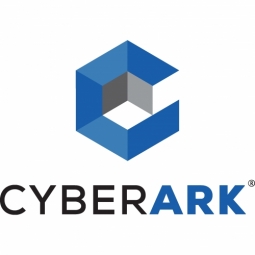Technology Category
- Application Infrastructure & Middleware - Data Exchange & Integration
- Application Infrastructure & Middleware - Middleware, SDKs & Libraries
Applicable Industries
- Cities & Municipalities
- National Security & Defense
Applicable Functions
- Quality Assurance
Use Cases
- Perimeter Security & Access Control
- Tamper Detection
Services
- System Integration
- Testing & Certification
About The Customer
Maximus is a global government services company founded in 1975. The company helps governments around the world improve services for their citizens. Maximus provides business process management and technology solutions to increase efficiency for public sector agencies in North America, Europe, the Middle East, Far East, and Australia. The company covers a variety of health and human service programs. Maximus has an annual revenue of US $3.4 Billion and employs 35,000 people.
The Challenge
Maximus, a global government services company, was in the process of implementing a digital transformation strategy to improve program efficiency, work smarter, and drive productivity and quality. A key part of this strategy was the transition to a cloud-first enterprise through the migration of key systems and applications to the cloud. This change provided an opportunity to rethink and strengthen the company's approach to privileged access management (PAM) across the organization. However, the existing PAM solution that had been selected for Maximus' legacy environment required a lot of customization, had limited integration capabilities, and could not handle complex use cases. The challenge was to create widespread improvements across the $3.4 billion corporation with only a modest-sized team and limited resources.
The Solution
Maximus decided to partner with CyberArk and implement CyberArk Privileged Access Manager. This solution offered the flexibility, scalability, and futureproofing needed to support business goals, coupled with comprehensive out-of-the-box features such as ease of integration with other applications and rapid deployment. Maximus approached privileged access management holistically, with CyberArk acting as the centerpiece. The company engaged senior leaders early in the process, which helped build an understanding of the need for change at the top level. Then it was a step-by-step process understanding day-to-day access needs and starting with key users such as domain administrators followed by server administrators. CyberArk proved invaluable in helping the small security team implement the PAM solution, deploying the solution in record-breaking time.
Operational Impact
Quantitative Benefit

Case Study missing?
Start adding your own!
Register with your work email and create a new case study profile for your business.
Related Case Studies.

Case Study
Turning A Stadium Into A Smart Building
Honeywell created what it called the “intelligent system” for the National Stadium in Beijing, China, turning the venue for the opening and closing events at the 2008 Summer Olympics into a “smart building.” Designed by highly controversial artist Ai Weiwei, the “Bird’s Nest” remains one of the most impressive feats of stadium architecture in the world. The 250,000 square meter structure housed more than 100,000 athletes and spectators at a time. To accommodate such capacity, China turned to Honeywell’s EBI Integrated Building Management System to create an integrated “intelligent system” for improved building security, safety and energy efficiency.
.png)
Case Study
Smart Street Light Network (Copenhagen)
Key stakeholders are taking a comprehensive approach to rethinking smart city innovation. City leaders have collaborated through partnerships involving government, research institutions and solution providers. The Copenhagen Solutions Lab is one of the leading organizations at the forefront of this movement. By bringing together manufacturers with municipal buyers, the Copenhagen Solutions Lab has catalyzed the development and deployment of next-generation smart city innovations. Copenhagen is leveraging this unique approach to accelerate the implementation of smart city solutions. One of the primary focus areas is LED street lighting.

Case Study
Buoy Status Monitoring with LoRa
The Netherlands are well-known for their inland waterways, canals, sluices and of course port activities. The Dutch Ministry of Infrastructure indicates that there are thousands of buoys and fixed items in and near water environments that would profit from IoT monitoring. One of the problems with buoys for example, is that they get hit by ships and the anchor cable breaks. Without connectivity, it takes quite some time to find out that something has happened with that buoy. Not to mention the costs of renting a boat to go to the buoy to fix it. Another important issue, is that there is no real-time monitoring of the buoys at this moment. Only by physically visiting the object on the water, one gains insight in its status.

Case Study
Barcelona Case Study
Barcelona’s heavy traffic and its associated high levels of pollution were the primary factors that motivated some companies and universities to work on strategies for improving traffic in the city centre. Bitcarrier is one of the technologies involved in the In4Mo Project, whose main objective is to develop the applications that form the core of smart mobility, one of the fundamental pillars of the smart city concept.

Case Study
China Mobile Smart Parking
Smart Parking, powered by NB-IoT technology, is making it easier for drivers to find free parking spots. Cities can better manage their parking assets and maximize the revenue available to them as a result. Drivers searching for parking create congestion and pollution by circling and hunting for available parking. Smart Parking services are able to significantly ease these problems by guiding a driver directly to a parking space.








